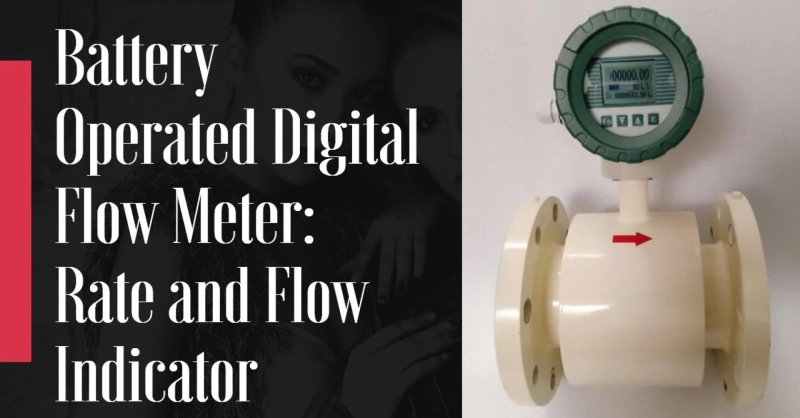A device that measures the flow rate of liquids or gases is known as a flow meter. Most flow meters measure either in volume on mass depending on the specifications. Moreover, they are usually powered by an electric power source like the main power supply. Lately, there has been a surge in the use of digital flow meters. In definition, these are flow meters with digital displays. Its main feature is that measurements are interpreted in units that are easy to understand. A battery-powered digital flow meter is dependent on Lithium batteries. This article will look at how a battery-powered digital water flow meter works.
How it Works
Digital flow meters have display monitors that show the meter readings in measurement values that any layman can easily understand. They measure the flow rate from the outside of the pipe. The battery-powered digital flow meter substitutes electricity power with battery power which makes it portable. Though it is a relatively new technology, most of the available flow meters also have a digital version as more and more companies switch from manual. Battery-powered digital flow sensors come with their benefits and disadvantages as well.
The types of battery-powered digital flow meter are not different from manual. The topmost sellers are generally the same. Some of them include:
Mass flow meters measure flow in mass per unit instead of volume.
Differential pressure flow meters measure flow rate by use of pressure at different points of the flow system.
A positive displacement flow meter uses the displacement of liquid or gas, filling the same space with more liquid to determine the flow rate.
These are just some of the flow meters available and can be found in digital forms.
Benefits
Most factories in need of flow meters are moving toward a digital era. There must be benefits to this system. Here are some benefits listed below.
Easy to Read
Thanks to the digital display, it is much easier to read the measurements. The units that are displayed can be easily translated, reducing the workload as factories measure flow rate. The data collection is almost the same as in manual systems; only the digital converts the user\'s measurements.
More Accurate
Another reason processes seem to prefer battery-powered digital slow meters is the accuracy. Digital flow sensors offer more accurate readings than manual ones. Manual flow meters are easily affected by variables such as inconsistency indoor upstream or the liquid or gas velocity. Digital slow meters are not susceptible to such variables making them more precise.
It is not Affected by Temperature or Pressure.
Regular flow meters depend on pressures and temperature to show measurements. If there is a fluctuation in any of these, it could create some inaccuracies in rates and flow indications. However, digital sensors can easily bypass this. In providing accurate information, pressure and temperature play a very minute role.
Does not need an Electrical Outlet
Both manual and digital flow meters depend on power sources. The most common form of power for these sensors is electricity. This becomes a problem when the meter is far from a power outlet. Battery-powered flow meters doesn\'t face this problem as it carries its power source.
Portable
Most flow meters do not give the luxury of being portable. Thanks to being battery powers, they can be fixed at any point of the piping. Again the power source comes into play. An electrical outlet is usually in fixed positions. Battery-powered sensors can be moved around with ease.
Disadvantages
Just like there are some advantages, there are some disadvantages too. Here are some.
Cost
One disadvantage with battery-powered digital flow meters is the cost. At the end of the day, if you want a meter that can measure flow rates and last, then digging deep into your pocket is necessary. Keep in mind that this is new technology, and in this case, quality means costly. A system that lasts longer and gives precise reading is not cheap.
Battery replacement
No matter how quality a product is, replacement is necessary at some point. Battery use for long periods, especially on digital flow meters, makes wearing it out. Eventually, a replacement battery will be needed. Unlike electrical power, you cannot count on a battery to last more than a few years before there is a need to buy.
Conclusion
Battery-powered meters might be new in the market, but they have gained ground over their counterparts. Adding the digital aspect makes the dal even sweeter. Ultimately, what a plant needs is an effective process that promises the system and minimizes the overall cost. Battery-powered digital flow meters do just that and more. It is worth investing in.



